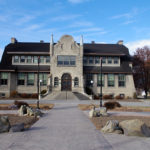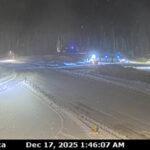Home »

Seeing the forest as well as the trees
Op-Ed Commentary
It’s one of the biggest issues in the B.C. election – but except for one party – is mostly ignored.
I’m talking about B.C.’s trees. Those tall, narrow, green things made of wood that reach to the sky and collectively form forests that used to be the envy of the world. But not anymore in B.C. where untouched, virgin forests have become almost an endangered species as we cut them down so eagerly. Twenty more years of this and there will be no Old Growth left in the province and the degraded forests they leave behind will no longer support a thriving industry that was once the backbone of the provincial economy and millions of ecosystems that gave B.C. one of the richest natural environments on earth.
What will we live on then, AI? If you think artificial intelligence can carry this province the way forestry has for more than a century, you’re being delusional.
Look at the numbers. According to a Tyee article, “the forest industry has seen a staggering 45 per cent drop in employment, translating to lost livelihoods for nearly 35,000 workers. Last year alone, the forestry sector saw the loss of 3,750 jobs.” How many pink slips will be handed out in sawmills and pulp mills in BC this year? One shudders to think. Every time a mill closes in BC, there’s a brief flurry of interest in the media than the closure is forgotten. And what do the owners of the big mills do? They open another one up to in the southern US pine belt where wages are lower, trees grow faster and there are fewer pesky unions to worry about. It’s a zero-sum game.
Let’s be realistic. When it comes to the future of forestry in B.C. there are no easy answers. The economic outlook is grim, and industry’s answer is to double-down on the issue, squeeze as much revenue as they can out of the forests, then leave Dodge for greener pastures abroad. And sad to say B.C. governments have historically supported this exploitive process to the hilt with the result can clearly be seen in the thousands of clear-cut patches that mar the landscape from the West Coast to the hinterland. They call it “Beautiful B.C.,” but it isn’t.
A mantra once heard in B.C. was that 50 cents of every dollar made in the province came directly or indirectly from forestry. Few, if any, are saying that now as the industry slides further into the darkness of debt, layoffs and closed mills. The once militant forestry unions like the IWA have long since abandoned the scene and the forestry unions left have joined in the plunder aided by American multi-nationals and successive BC governments determined to get what they can from the resource before it completely dries up in the next decade or so.
I know this sounds harsh but sadly it’s true and I defy anyone to prove me wrong. In the past half-century, B.C. forest industry employees have lived the “good life” thanks to over-cutting our priceless forests. But now the green money fountain is drying up. Tough decisions will have to be made to replenish the resource on a more sustainable basis.
More tough decisions need to be made to repair a degraded environment caused by the excesses of industry. And who’s going to make those decisions? It will be us, of course, with the next tough decision day being Oct. 19 when close to 4.5 million British Columbians vote.
I wouldn’t insult anyone’s intelligence by suggesting how they should mark their ballot. But I don’t mind saying the key factor in my vote is renewing our severely depleted forests enabling them to thrive again for the benefit of man, the environment and industry alike.
Surely that’s not too much to ask?
Our magnificent forests should be farmed, not mined as they have in the past.
– Gerry Warner is a retired journalist, who believes in leaving the habitat in better shape than it was originally.








